The Adventure Continues (Page Three)
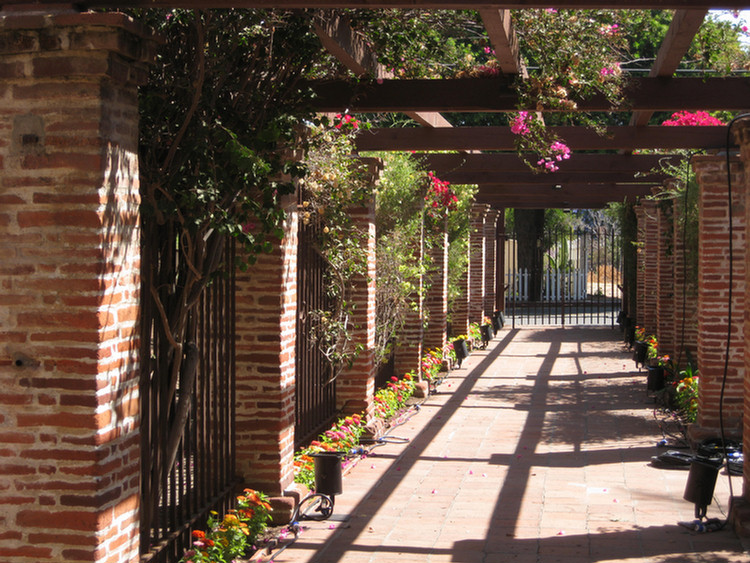
The Priests Garden is east of Serra's Church

This area is the graveyard where almost 2,000 people are buried in unmarked
graves
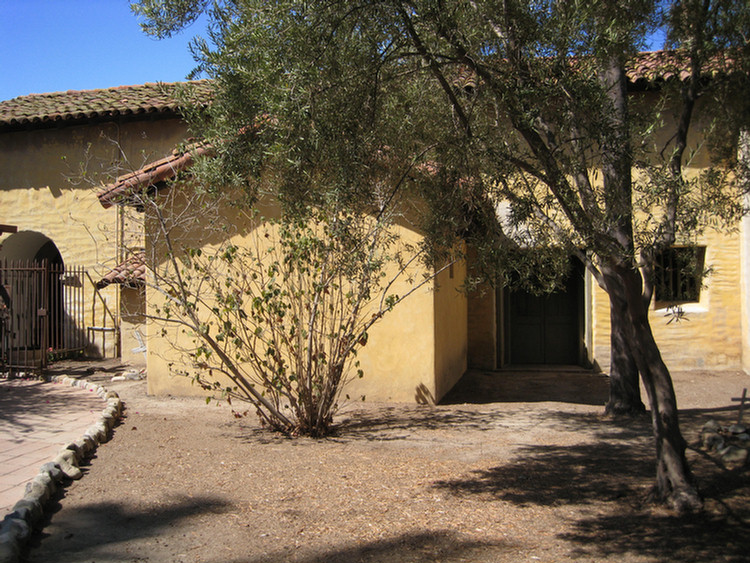
The Mission Bells
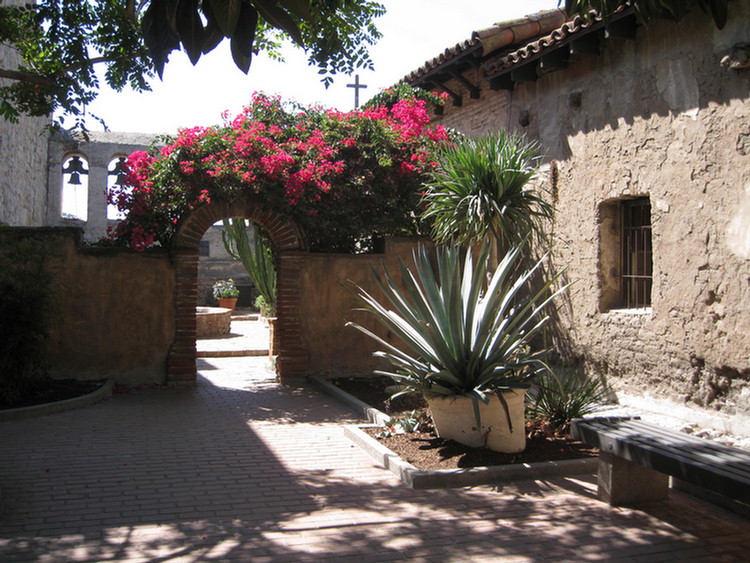
To the Bell's of Capistrano
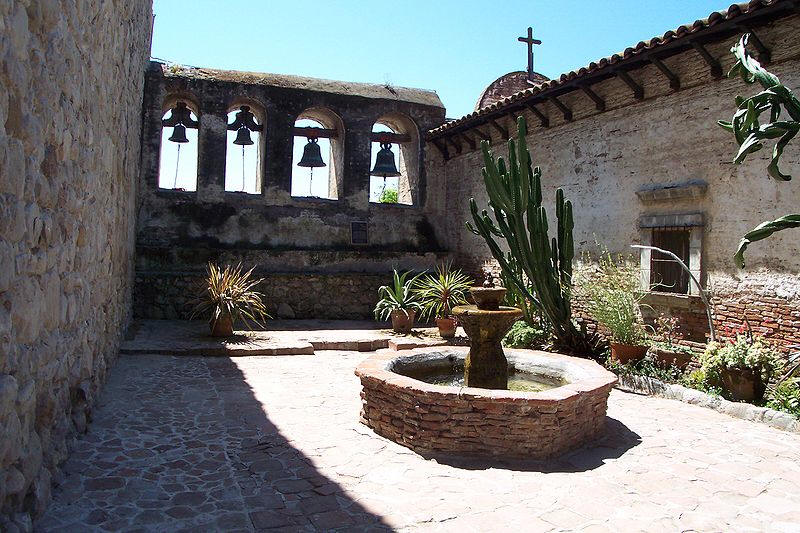
The "Sacred Garden" at Mission San Juan Capistrano.
Did you know? - In the aftermath of the 1812 earthquake, the two largest bells cracked and split open. Due to this damage neither produced clear tones. Regardless, they were hung in the campanario that went up the following year. During the Mission's heyday, a lone bell also hung at the west end of the front corridor, next to an entrance gate which has long since eroded away. One of Father O' Sullivan's companions during his tenure at San Juan Capistrano was José de Gracia Cruz, better known as Acú, who related many stories and legends of the Mission. A descendent of the Juaneño Indians, he served as the Mission's bell ringer until his death in 1924.
On March 22, 1969 President Richard M. Nixon and First Lady Pat Nixon visited the Mission and rang the Bell of San Rafael. A bronze plaque commemorating the event is set in the bell wall. In celebration of the new Mission church being elevated to minor basilica status in 2000, exact duplicates of the damaged bells were cast by Royal Bellfoundry Petit & Fritsen b.v. of Aarle-Rixtel, the Netherlands utilizing molds made from the originals. The replacement bells were placed in the bell wall and the old ones put on display within the footprint of the destroyed Mission campanile ("bell tower")
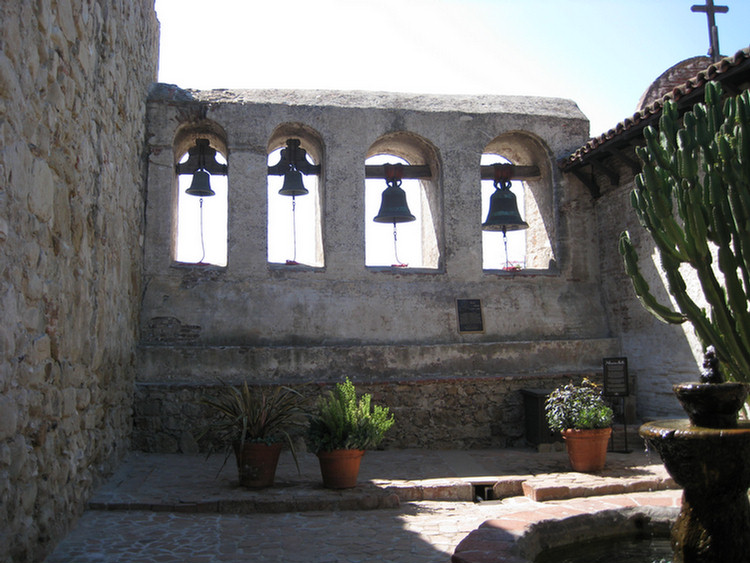
Mission Bells are rung for special events
Did you know? - Bells were vitally important to daily life at any mission. The bells were rung at mealtimes, to call the Mission residents to work and to religious services, during births and funerals, to signal the approach of a ship or returning missionary, and at other times; novices were instructed in the intricate rituals associated with the ringing the mission bells. The original bells were hung from a large nearby tree for some fifteen years, until the chapel bell tower was completed in 1791. What ultimately became of the original bells is not known. New bells were cast in Chile for inclusion in the belfry of "The Great Stone Church." All four of Mission San Juan Capistrano's bells are named and all bear inscriptions as follows (from the largest to the smallest; inscriptions are translated from Latin):


The four-bell campanario was erected a year after the bell tower at "The
Great Stone Church" was toppled in the 1812 earthquake.
The Great Stone Church
The prestigious World Monuments Fund placed "The Great Stone Church" on its List of 100 Most Endangered Sites in 2002. The most recent series of seismic retrofits at the Mission were completed at a cost of $7.5 million in 2004. About half-a-million visitors, including 80,000 school children, come to the Mission each year.
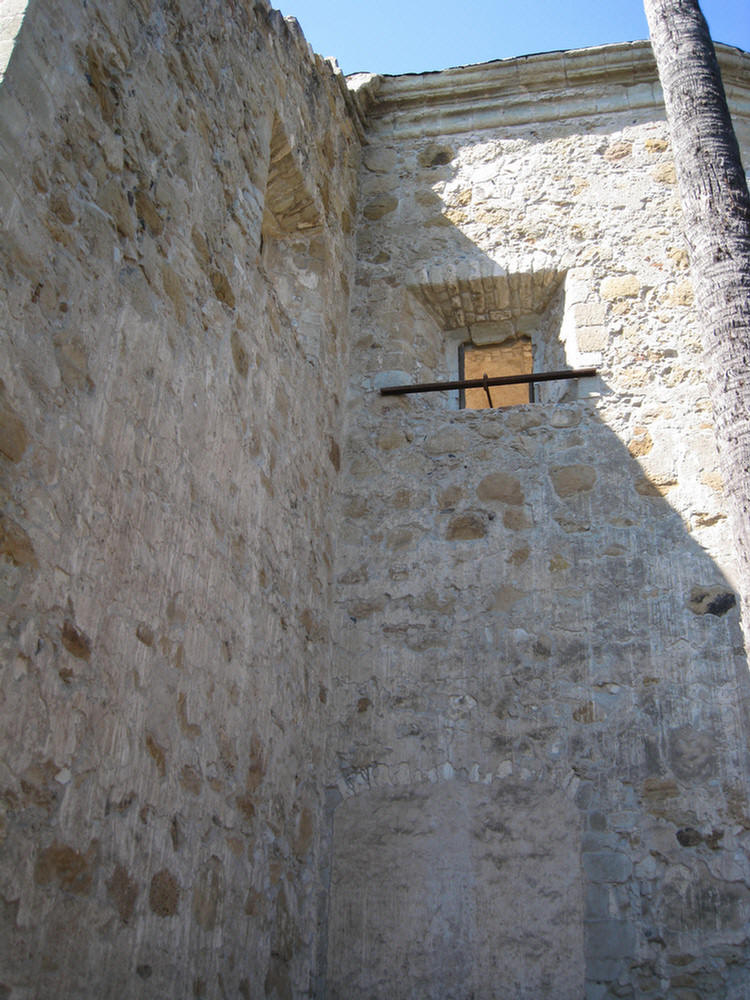
Notice the railroad tracks used to stabalize the wall... Not open to the public!

Amazing construction without modern tools!
Did you know? - The Cliff Swallow (Petrochelidon pyrrhonota) is a migratory bird that spends its winters in Goya, Argentina but makes the 6,000-mile (10,000 km) trek north to the warmer climes of the American Southwest in springtime. According to legend the birds, who have visited the San Juan Capistrano area every Summer for centuries, first took refuge at the Mission when an irate innkeeper began destroying their mud nests (the birds also frequent the Mission San Carlos Borromeo de Carmelo).[119] The Mission's location near two rivers made it an ideal location for the swallows to nest, as there was a constant supply of the insects on which they feed, and the young birds are well-protected inside the ruins of the old stone church.
A 1915 article in Overland Monthly magazine made note of the birds' annual habit of nesting beneath the Mission's eaves and archways from Spring through Fall, and made the swallows the "signature icon" of the Mission; Father O'Sullivan utilized interest in the phenomenon to generate public interest in restoration efforts during his two decades in residence.[120] One of bell ringer Acú's most colorful tales was that the swallows (or las golondrinas, as he called them) flew over the Atlantic Ocean to Jerusalem each winter, carrying small twigs on which they could rest atop the water along the way. On March 13, 1939 a popular radio program was broadcast live from the Mission grounds, announcing the swallows' arrival. Composer Leon René was so inspired by the event that he penned the song "When the Swallows Come Back to Capistrano" in tribute.[99] During its initial release the song spent several weeks atop the Your Hit Parade charts. The song has been recorded by such musicians as The Ink Spots, Fred Waring, Guy Lombardo, and Glenn Miller. A glassed-off room in the Mission has been designated in René's honor and displays the upright piano on which he composed the tune, the reception desk from his office and several copies of the song's sheet music and other pieces of furniture, all donated by René's family.
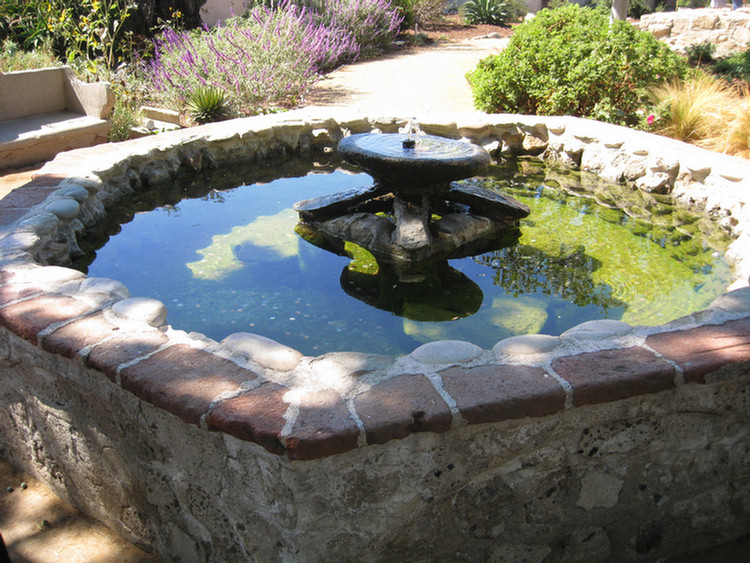
Fountains were pretty
Did you know? - The tragedy of the "The Great Stone Church" gave rise to its best-loved legend, that of a young native girl named Magdalena who was killed in the collapse. Magdalena lived on the Mission grounds and had fallen in love with an artist named Teófilo. However, the pair was deemed too young to marry by their elders and were forced to carry on their relationship in secret. On that fateful December morning, the repentant Magdalena walked ahead of the procession of worshipers carrying a penitent's candle just as the earthquake struck. Teófilo rushed into the church as the walls and roof tumbled to the ground in a vain attempt to save his lover. When the rubble was cleared the pair was found among the dead, locked in a final embrace. It is said that on moonlit nights one can sometimes make out the face of a young girl, seemingly illuminated by candlelight, high up in the ruins.

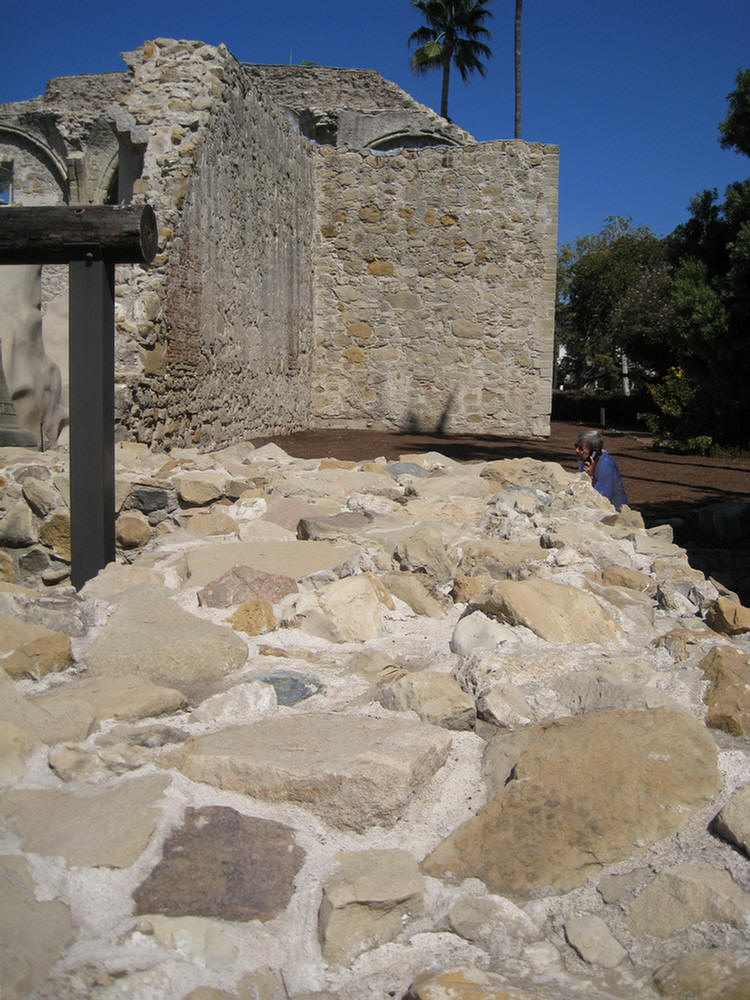

Two of the original bells (San Vicente and San Juan) sit on
display within the footprint of the original bell tower at Mission San Juan
Capistrano. Damage to the smaller bell (San Juan), sustained during the
1812 earthquake, is readily apparent in this view.
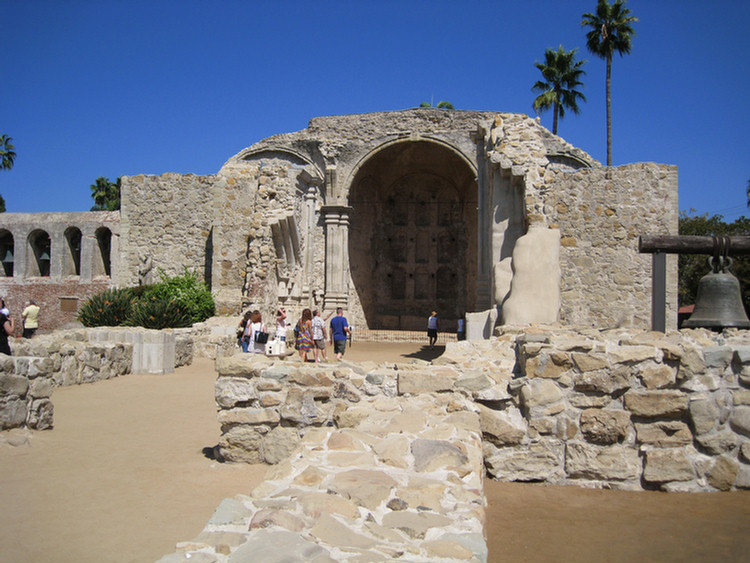
Most of the building materials were hauled off after the 1812 earthwuake
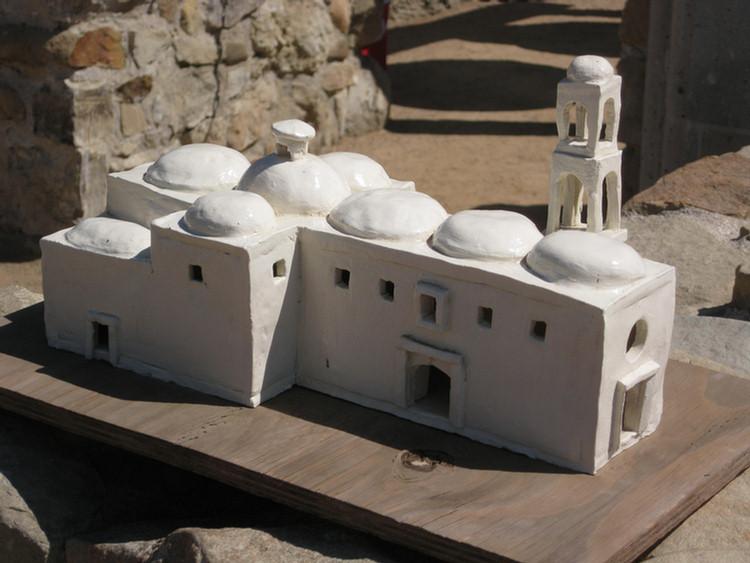
What the Great Church looked like in 1811
Did you know? - Work was begun on "The Great Stone Church" (the only chapel building in Alta California not constructed out of adobe) on February 2, 1797. It was laid out in the shape of a cross, measuring 180 feet (55 m) long by 40 feet (12 m) wide with 50-foot (15 m) high walls, and included a 120-foot (37 m) tall campanile (bell tower) located adjacent to the main entrance. Local legend has it that the tower could be seen for ten miles (16 km) or more, and that the bells could be heard from even farther away. The sandstone building sat on a foundation seven feet thick.
Construction efforts required the participation of the entire neophyte population. Stones were quarried from gullies and creek beds up to six miles (10 km) away and transported in carts (carretas) drawn by oxen, carried by hand, and even dragged to the building site. Limestone was crushed into a powder on the Mission grounds to create a mortar that was more erosion-resistant than the actual stones. On the afternoon of November 22, 1800 tremors from the 6.5-magnitude San Diego Earthquake cracked the walls of the rising edifice, necessitating that repair work be performed.
Unfortunately, Señor Aguilár died six years into the project; his work was carried on by the padres and their charges, who made their best attempts to emulate the existing construction. Lacking the skills of a master mason, however, led to irregular walls and necessitated the addition of a seventh roof dome. The church was finally completed in 1806, and blessed by Fray Estévan Tapís on the evening of September 7; a two-day long fiesta followed. The sanctuary floors were paved with diamond-shaped tiles, and brick-lined niches displayed the statues of various saints. It was by all accounts the most magnificent in all of California and a three-day feast was held in celebration of this monumental achievement.
Tragedy struck the settlement when on the morning of December 8, 1812 (the "Feast Day of the Immaculate Conception of the Blessed Virgin") a series of massive earthquakes shook Southern California during the first Sunday service. The 7.0-magnitude Wrightwood Earthquake racked the doors to the church, pinning them shut. When the ground finally stopped shaking, the bulk of the nave had come crashing down, and the bell tower was completely obliterated. Forty native worshippers who were attending mass and two boys who had been ringing the bells in the tower were buried under the rubble and lost their lives, and were subsequently interred in the Mission cemetery. This was the second major setback the outpost had suffered, and followed severe storms and flooding that had damaged Mission buildings and ruined crops earlier in the year.
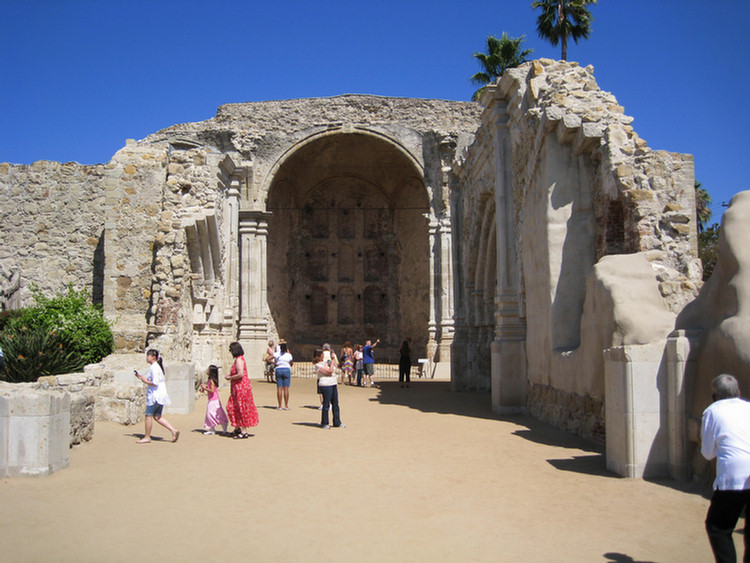
"The most important and pretentious building of the whole Mission period..." was modeled after the Byzantine cathedrals scattered throughout Europe and Western Asia.
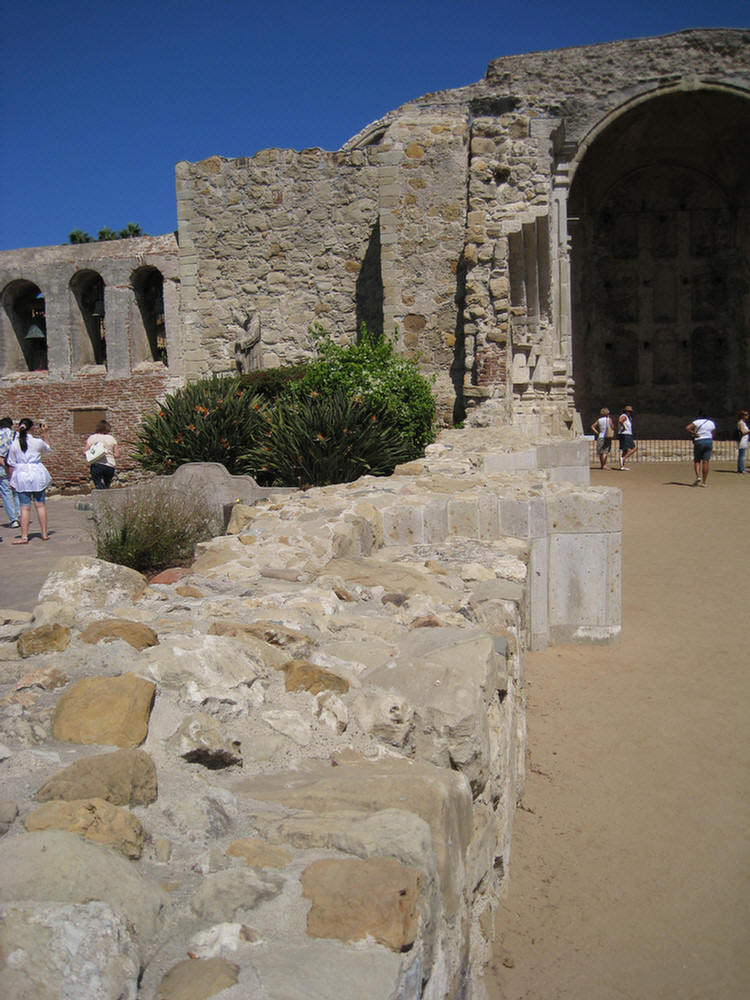
Amazing how such creations were made without any power tools
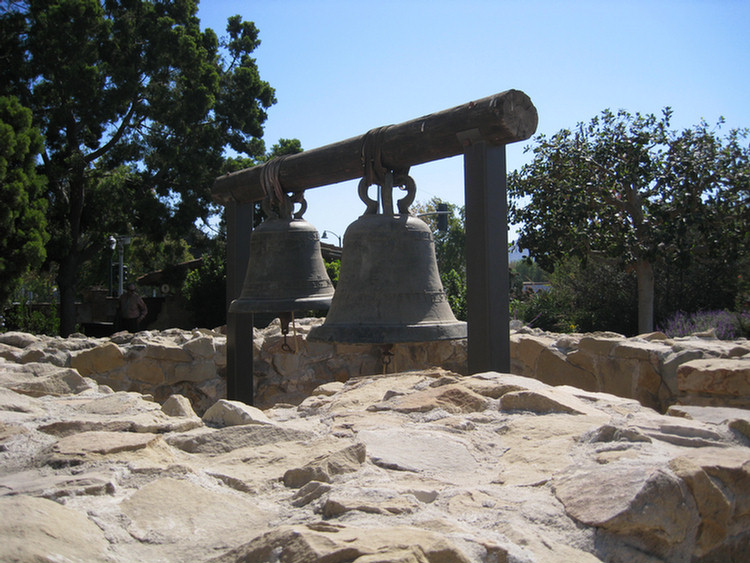
San Vicente and San Juan

The plaster protects the bricks
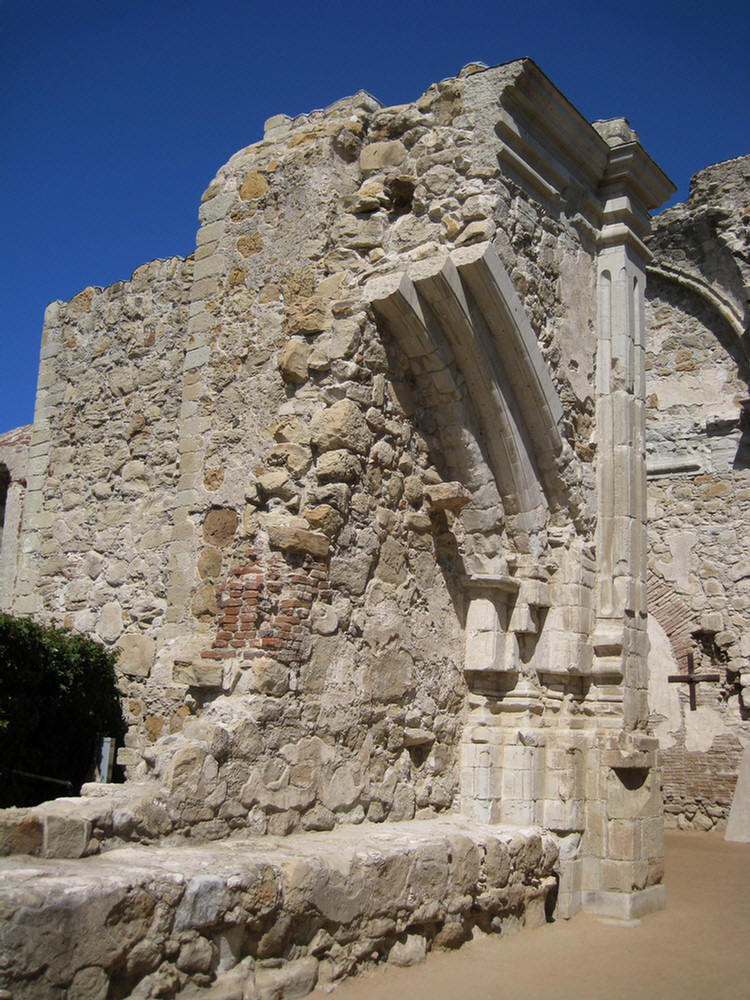
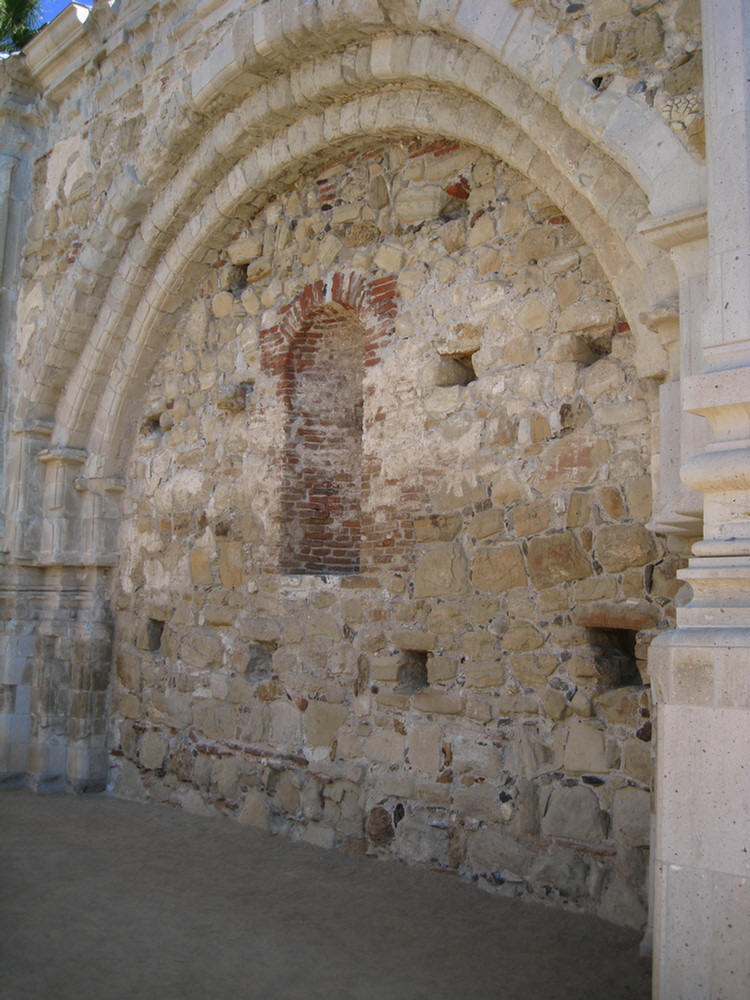
Just hauling the rocks to the site was a monumental task
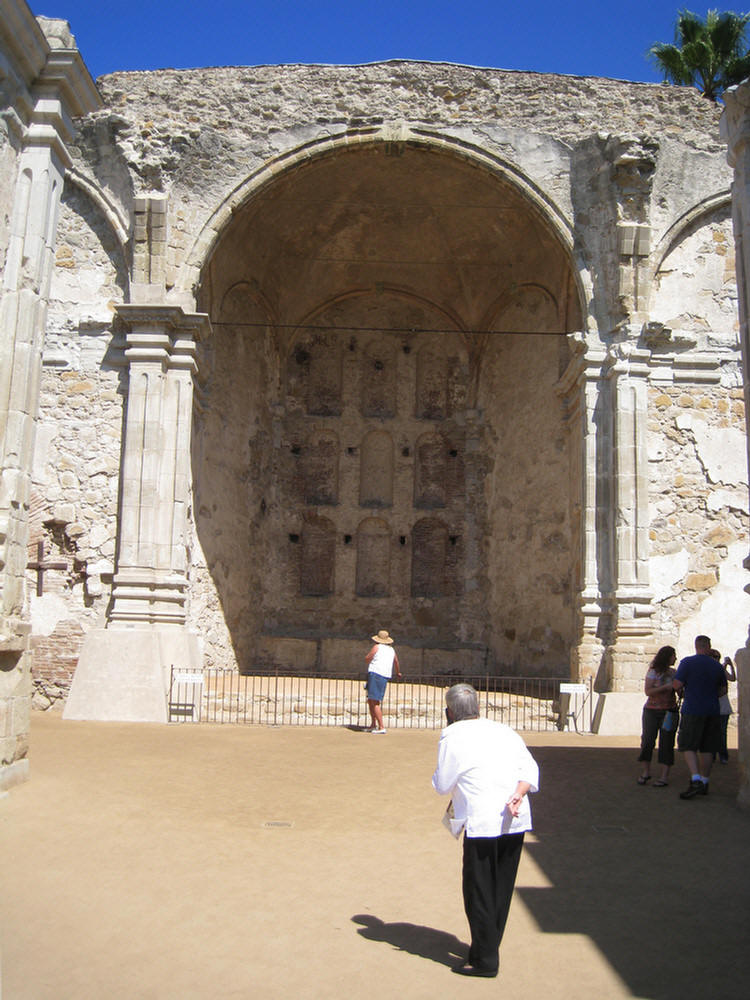
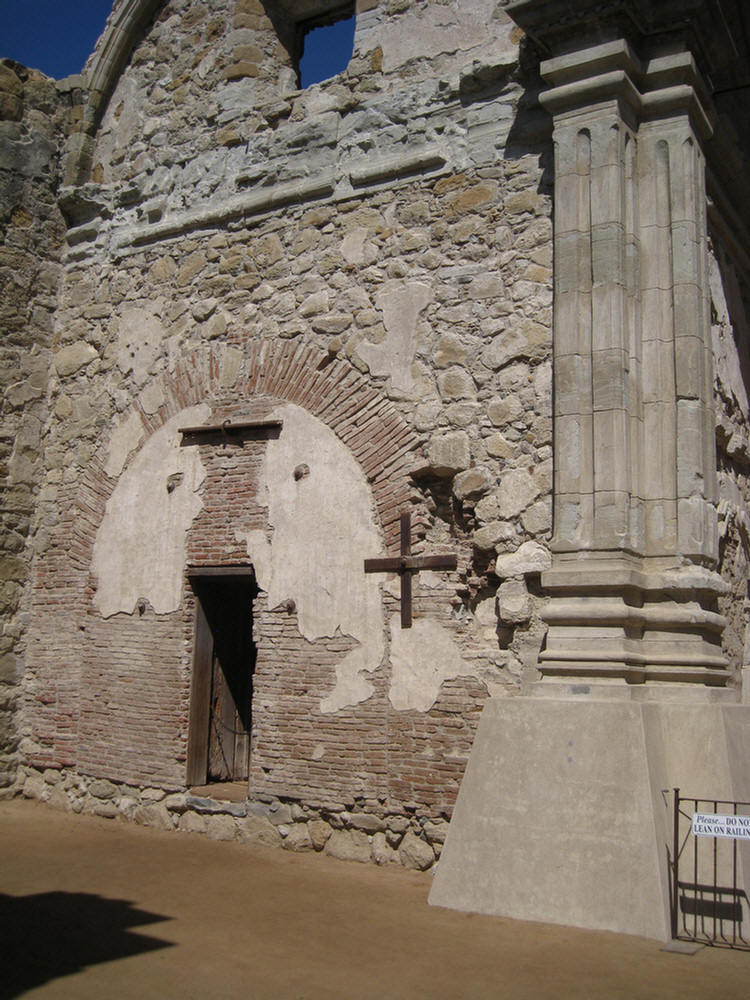
Iron stabalization has been added to attempt to protect what remains

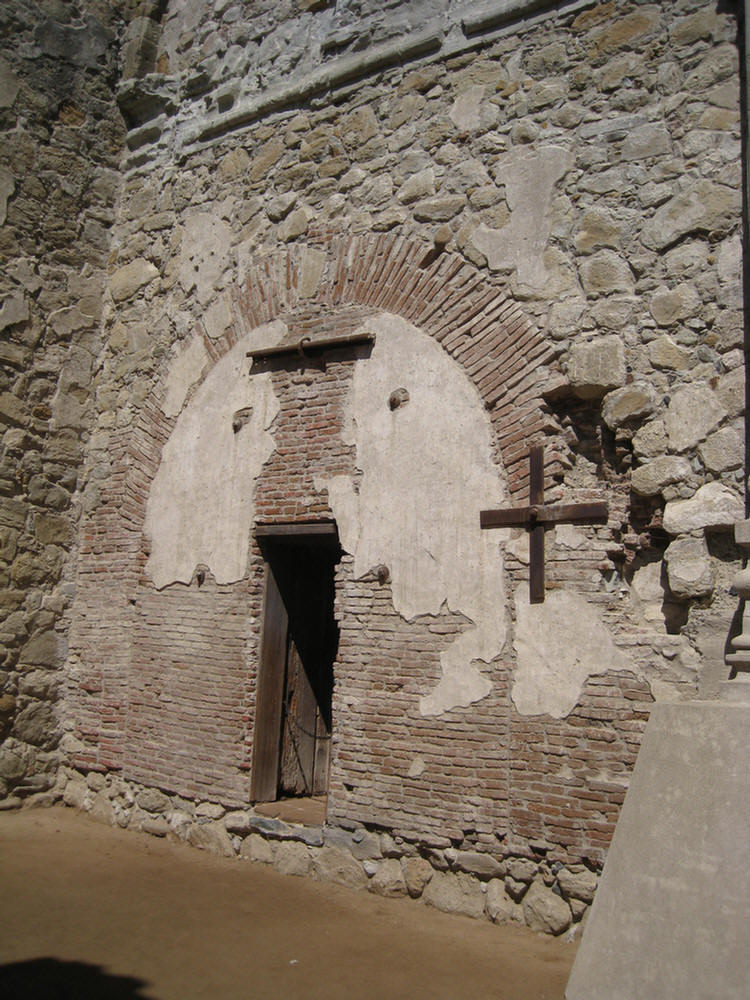

It must have looked like a miracle to the indials
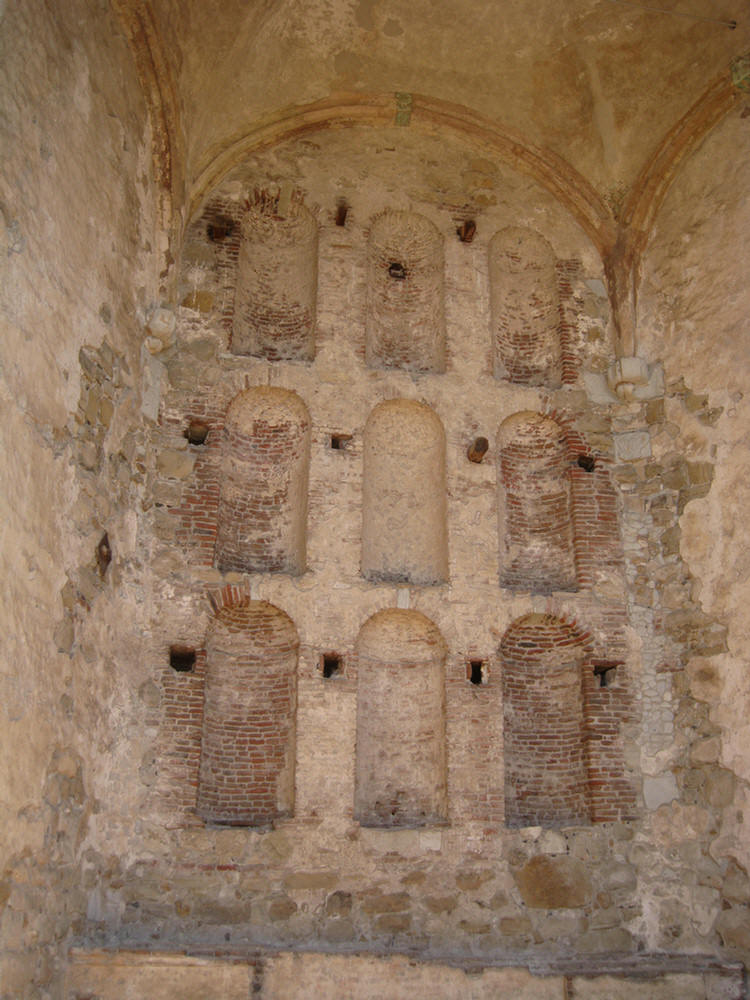
Did you know? - A newspaper editorial recently summed up the preservation of the mission most eloquently: "The Mission is more than a relic of the past. It remains a haven of rest amid the bustle of 20th century California, a source of social ballast for the present and future, whispering of human aspirations that rise beyond the humdrum of our busy lives." Maybe it's that whispering that the swallows hear, returning to the mission spring after spring.